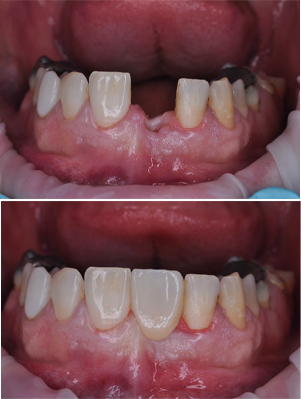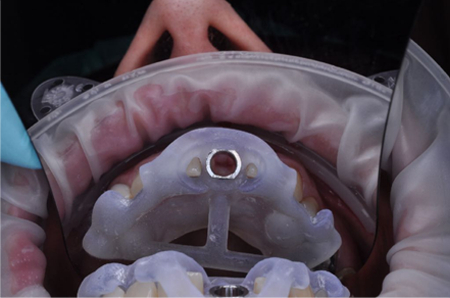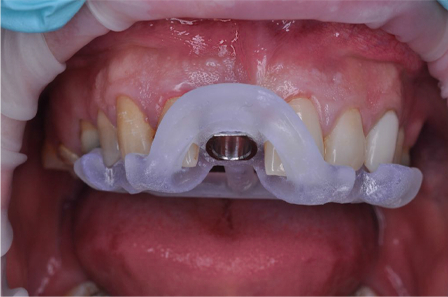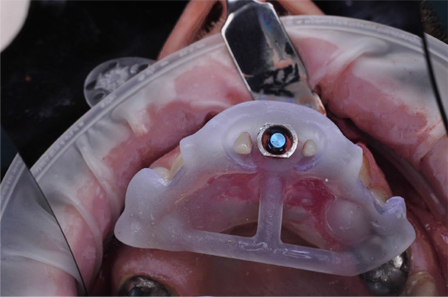Guided surgery: new technologies in implant installation
When planning the installation of implants, there are 2 ways to implement a treatment plan: manual surgery (by eye, according to preliminary data analysis) and guided surgery, also known as navigation surgery. Dental implantation according to the second method is more accurate and gentle. Many leading experts use precisely guided surgery to get the best result with the least loss of time and effort. What is this method and how does it work?
 What is guided surgery
What is guided surgery
Guided surgery is a dental implantation procedure that is implemented using digital technology. It helps to accurately plan and carry out the treatment, avoiding errors, as can happen with manual surgery, where the entire installation process takes place “by eye”.
Manual surgery is fraught with the fact that the doctor may not calculate the depth correctly and accidentally touch the nerve, which will subsequently need to be removed. There is also a risk of losing a tooth or install an implant in the wrong way, as a result of which it will fall out over time. Plus, manual surgery almost always requires making large cuts on the gums, and this significantly increases the damage and healing time of the sutures.
Therefore, in order to avoid undesirable consequences and difficulties in treatment, it is better to use the method of guided surgery.
How is navigation surgery performed?
A diagnostic computed tomography of the jaws is placed in a special program, with which you can evaluate the condition of the teeth, gums and bone tissue. Then, using these data, a 3D model of the jaw is created, where the location of the implants is completely drawn, the angle of inclination is calculated and how the prosthetics of teeth on the implants will be performed. The result is a comprehensive digital demonstration of the project for the placement of implants and prostheses, thanks to which a surgical template is created from the corresponding material on a 3D printer or using laser sintering of metal.
Then, the resulting template is placed on the patient’s teeth (or mucous membrane), fixed with screws, and the surgeon with its help already fully controls the process of osteotomy and implant placement according to the set parameters, at the right angle and at the required depth for the future prosthesis.
Benefits of guided surgery
High accuracy
Thanks to the guided patterns, dental implantation has the highest level of accuracy. For example, if implants need to be installed at angles of 17°, 32° or 45°, then it is quite difficult to do it by eye, and if you make a mistake, then it will be impossible to install a prosthesis. Surgical templates exclude this error and help to install the implants in the right place and at the angle that the treatment plan requires.
Suitable for difficult situations
Dental implantation with such high accuracy makes guided surgery an ideal method of treatment planning and implementation. Especially in complex situations, when difficulties arise related to the volume of the bone and the proximity of the important components: the alveolar nerve, maxillary sinus or adjacent teeth.
Faster healing and less bone shrinkage
In some cases, guided surgery avoids severe invasion, in which it is necessary to cut the gum. If this is possible, then a small recess in the gum is cut out with the help of a bur, through which the dental implant then passes. Thus, less manipulation of the bone is carried out, which means that its nutrition is better preserved and it heals faster.
Time saving
Thanks to the guided templates, the time for surgery is significantly reduced (the operation will take no more than 30 minutes), as well as for the healing of the implant. Plus, with proper planning, the time for manufacturing prostheses will also be reduced, which will reduce the time you wait while you wear temporary crowns.

Without implant

Without implant

With implant
How much does guided surgery cost
If we talk about a simple template (for installing 1-2 implants), then its cost will be approximately 150-200 €. With a total installation, the cost of the template will be more expensive, since it will consist of 4 parts and use several combinations. On average, the cost of guided surgery for a total installation will be 800-1000 €.
Compared to the potential cost of sinus lifting or bone augmentation, guided surgery will not be expensive. In addition, it minimizes the risk of rejection of the dental implant due to improper installation, which means that the dental implant installed using the surgical template will last you longer (up to 15+ years).
Fill in the form for a free 15-minute video consultation (Zoom), or post your question on Facebook or in the email.

























